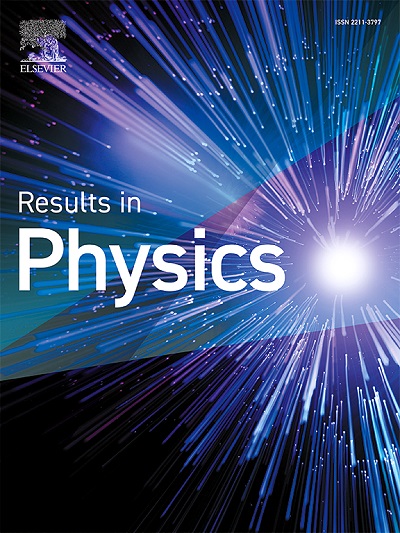Valley-Hall slow-light waveguide states with dual-band in all-dielectric valley photonic crystals
IF 4.4
2区 物理与天体物理
Q2 MATERIALS SCIENCE, MULTIDISCIPLINARY
引用次数: 0
Abstract
The slow-light waveguide states protected by topology could be used in strengthening interaction between light and matter, so they can be used for realizing a lot of unique physical optics phenomena and interesting applications. In this work, we consider a kind of all-dielectric valley photonic crystals (VPCs) with honeycomb lattice, realize dual-band photonic valley-Hall kink states at the stacking interface composed of two VPCs with mirror symmetry through breaking the parity-reversal symmetry of photonic system, such as low-frequency and high-frequency valley-Hall kink states. The valley-Hall kink states can be classified two categories: guided states and slow-light states, which depends on the magnitude of group index ng. By full-wave simulations, we directly observe that the dual-band valley-Hall slow-light states are in a way of standing-wave-liked modes to transport along the interface, and the more group index ng is, the half-wavelength of standing-wave-liked is longer. Based on numerical calculation, the largest group indexes of low-frequency and high-frequency valley-Hall slow-light waveguide states are 1000, 1378, respectively. Hence in theory we can use half-wavelength of standing-wave-liked modes to characterize slow-light states instead of judging respond time or fitting dispersion curve, which provides an alternative method or road to directly observe and demonstrate slow-light waveguide states in experiment.
求助全文
约1分钟内获得全文
求助全文
来源期刊

Results in Physics
MATERIALS SCIENCE, MULTIDISCIPLINARYPHYSIC-PHYSICS, MULTIDISCIPLINARY
CiteScore
8.70
自引率
9.40%
发文量
754
审稿时长
50 days
期刊介绍:
Results in Physics is an open access journal offering authors the opportunity to publish in all fundamental and interdisciplinary areas of physics, materials science, and applied physics. Papers of a theoretical, computational, and experimental nature are all welcome. Results in Physics accepts papers that are scientifically sound, technically correct and provide valuable new knowledge to the physics community. Topics such as three-dimensional flow and magnetohydrodynamics are not within the scope of Results in Physics.
Results in Physics welcomes three types of papers:
1. Full research papers
2. Microarticles: very short papers, no longer than two pages. They may consist of a single, but well-described piece of information, such as:
- Data and/or a plot plus a description
- Description of a new method or instrumentation
- Negative results
- Concept or design study
3. Letters to the Editor: Letters discussing a recent article published in Results in Physics are welcome. These are objective, constructive, or educational critiques of papers published in Results in Physics. Accepted letters will be sent to the author of the original paper for a response. Each letter and response is published together. Letters should be received within 8 weeks of the article''s publication. They should not exceed 750 words of text and 10 references.
 求助内容:
求助内容: 应助结果提醒方式:
应助结果提醒方式:


